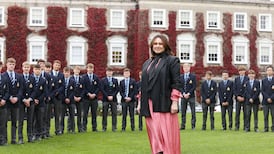Bird talk - for the table, that is - now revolves mostly around turkey, goose, and perhaps pheasant or duck for the Christmas dinner of the small family. But there are those, shooters and gourmets, for whom these dark months, mean above all, woodcock, with a nod to the snipe. But if you don't shoot them yourself and don't have friends who do, you will not find much joy in the shops in regard to the two favourites named above. Plenty of mallard, wigeon, teal of course, and the old standby pigeon breasts. One establishment in Dublin the other day had two woodcock and might get more "towards the end of the week perhaps." It seems likely that the fowlers send much of their kill to hotels and restaurants - or maybe export them?
Mrs Beeton, is quite rhapsodic about the woodcock in particular. A bit ghoulish, some of the more sensitive souls might think. But she was writing in 1861. Or maybe just too frank. Woodcock, she writes, should not be drawn i.e. gutted "as the trails are, by epicures, considered a great delicacy." (Trails is the more delicate word for entrails.) She goes into full, almost surgical detail about trussing the birds with their legs close to the body and the feet pressing the thighs, and then bringing the head around under the wing. The head and neck having first been skinned. You put slices of toast in the pan "to catch the trials". You roast the birds for 15 to 20 minutes "before a clear fire," and "flour and froth them nicely." A little gravy in the pan as you bring them to table.
There is a point about just when these birds may be cooked. "They are most delicious birds when well cooked; but they should not be kept too long; when the feathers drop, or easily come out, they are fit for table." It is said, no doubt with exaggeration, that in earlier days the epicures would only eat game when "high", ie bordering on the putrid.
Tastes change, and the natural history of European countries changes. For example, she tells us how to truss landrail. The landrail is another word for the corncrake. His Latin name is crex crex and the water rail is rallus aquaticus, but rails and crakes occupy the same page in the international book by Heinzel, Fitter and Parslow.
Mrs Beeton's book, old though it is, stands as a wonderful social and outdoor compendium. Its title is The Book of Household Management, but it is also a work of nature study.







